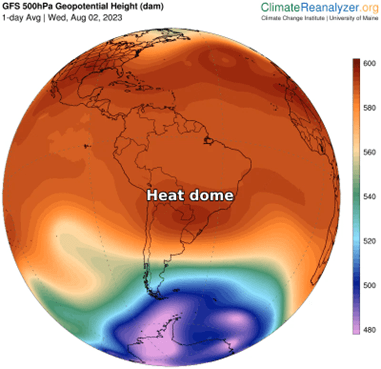The Southern Hemisphere is emerging from some of their hottest winter temperatures on record and bracing for even more heat as the warmer seasons begin.
Southern Hemisphere sees unprecedented summer-like winter
While Northern Hemisphere experienced the hottest July, Southern Hemisphere was not outdone. The weather was pretty much like summer in June, July, and August across parts of South America, Africa, and Australia.
In Latin America, countries experienced unprecedented heat at the beginning of August, the middle of winter, with temperatures in many places up to record high, between 10 and 20°C above what is normal.
In Chile, the capital Santiago recorded 24°C on the 2nd of August while temperatures over 35°C were recorded across the country, even 37°C in Vicuna, in central Chile. Likewise, in Argentina, Buenos Aires recorded its hottest 1st of August in 117 years with temperature exceeding 30°C, the August temperature being usually between 9 and 18°C.
In Brazil, the thermometers ticked above 37°C. El Niño is one of the main factors at play behind these extremes. Unfortunately for us, this 2023 El Niño event is shaping up to be a strong one.

READ MORE. Assess your local risk thanks to the THI
With Spring, ever more extreme weather in Southern Hemisphere
As the Northern Hemisphere enters Autumn with abnormal temperatures, this year of record-breaking weather is only heating up in the south. Researchers expect that Australia, Africa, and South America will experience even more extreme weather — not just high temperatures, but more intense rainfall.
The heat stress risks for animals is measured not only by temperature but by its combination with humidity. As a result, this extreme heat with high humidity will be detrimental for livestock performance and comfort. Anticipating heat stress will not only be crucial but an absolute necessity in the upcoming months in Southern Hemisphere.
READ MORE. Get in contact with our teams locally



